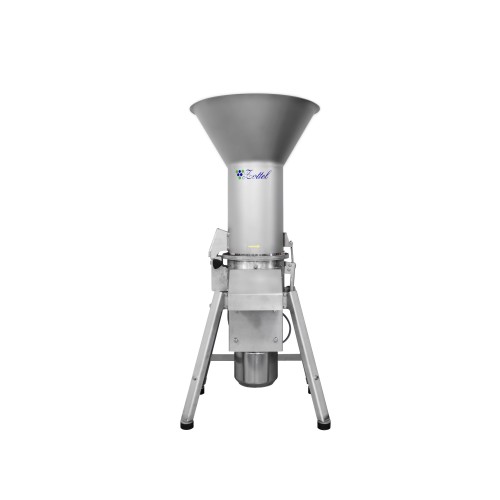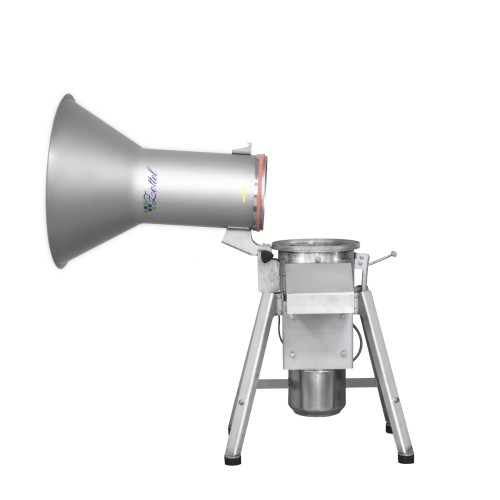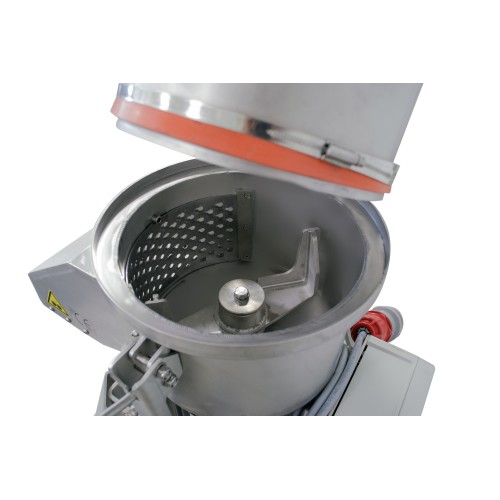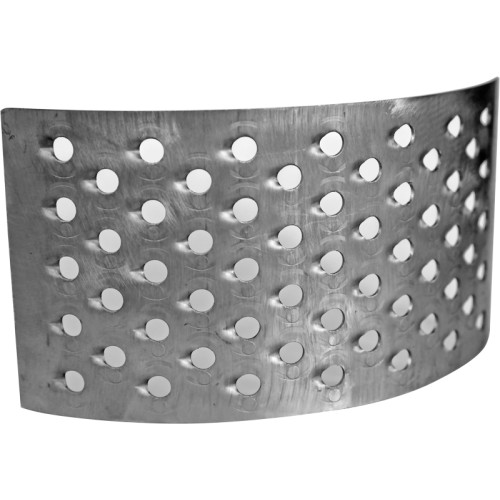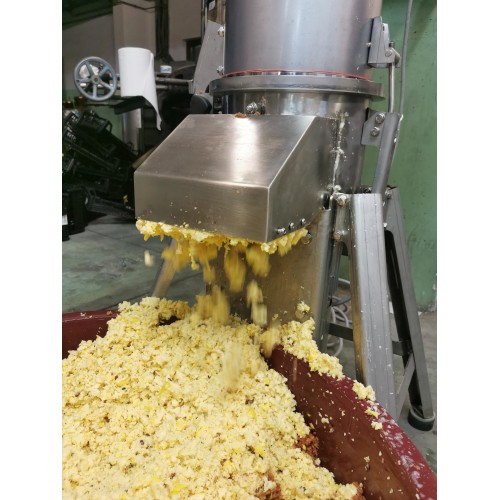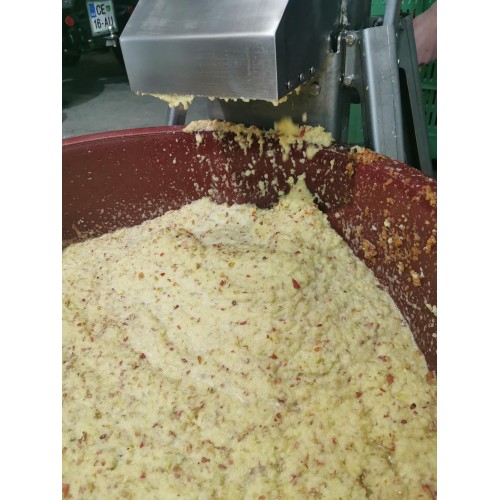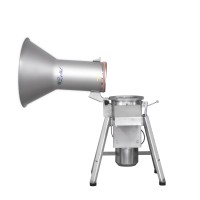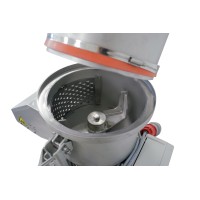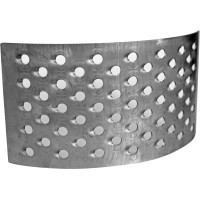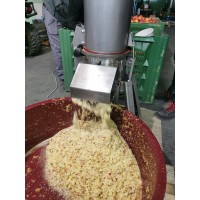Elektriskais ābolu un augļu smalcinātājs ZOTTEL MMS55

DPD - Delivery to Latvia (1 business days) - 21,79€
Express Post - Delivery to Latvia (1 business days) - 61,09€
UPS Standard - Delivery to Latvia (2 business days) - 73,31€
Itella Smartpost - Delivery to Latvia (2 business days) - 87,97€
Itella Smartpost Parcel Locker - Delivery to Latvia (2 business days) - 87,97€
Latvijas Pasta - Delivery to Latvia Priority (1-2 weeks) - 87,97€
UPS Express - Delivery to Latvia (1 business days) - 87,97€
- Kapacitāte: 4200 kg/h
- Izmēri: 580 x 680 x 1510 mm
- Asmeņi: 3
- Svars: 98 kg
- Elektriskā motora jauda: 5,5 kW
- Tīkla spriegums: 400V, 50Hz
- Apgrozījumu skaits: 1450 rpm
- Ražots Slovēnijā
Tas ir paredzēts dažādu augļu, piemēram, ābolu, bumbieru, cidoniju, rabarberu, aronijas, persiku, aprikožu, vīģu un dārzeņu, piemēram, burkānu, paprikas, bietes, tomātu, sīpolu un mārrutku sasmalcināšanai. Pirms sasmalcināšanas akmeņi ir jāizņem.
Smalcināšanas smalkumu var pielāgot, mainot asmeni. Standarta aprīkojumā ietilpst trīs dažādi asmeņi, kurus var izmantot atkarībā no augļu/dārzeņu veida un vēlamā augļu biezeņa biezuma.
Augļu un ābolu drupinātājs, pazīstams arī kā augļu dzirnavas, tiek izmantots, lai augļus sasmalcinātu smalkā masā vai biezenī. Šis process ir būtisks solis dažādās augļu pārstrādes programmās. Šeit ir galvenie augļu drupinātāja pielietojumi:
1. Sulas iegūšana:
Gatavošanās presēšanai: Sasmalcinot augļus masā, tos ir vieglāk presēt un iegūt sulu. Tas ir īpaši svarīgi augļiem ar cietu tekstūru, piemēram, āboliem un bumbieriem.
Palielināta raža: Augļu drupināšana palielina virsmas laukumu, ļaujot iegūt vairāk sulas, salīdzinot ar veselu augļu presēšanu. Lietojiet Zottel hidrospiedieti, lai saspiestu sasmalcinātus augļus ātri, efektīvi un bez fiziskas pūles.
2. Fermentācija:
Vīna darīšana: Vīna darīšanā vīnogu sasmalcināšana pārrauj tās miziņas, atbrīvojot sulu un mīkstumu, kas ir nepieciešams fermentācijai. Tas ļauj raugam efektīvāk piekļūt cukuriem augļos.
Sidra ražošana: Līdzīgi kā vīns, sidra ražošana ietver ābolu sasmalcināšanu, lai izveidotu masu, ko var fermentēt alkoholiskajā sidrā.
3. Džema un konservu pagatavošana:
Tekstūras sagatavošana: Lai veidotu džemus, želejas un konservus, augļi ir jādrupina, lai panāktu vēlamo konsistenci. Drupināšanas process sadala augļus, padarot tos vieglāk vārot un sajaucot vienmērīgā maisījumā.
4. Augļu biezeņi:
Vienmērīga konsistence: Augļu sasmalcināšana smalkā masā ir pirmais solis biezeņu pagatavošanai, kas tiek izmantoti dažādās kulinārijas programmās, tostarp bērnu ēdienos, mērcēs un desertos.
5. Uz augļiem balstīti produkti:
Vienāds maisījums: Produktiem, piemēram, augļu ādas, mērces un dažās saldumos, vienmērīgs augļu maisījums nodrošina konsekventu garšu un tekstūru.
Kopsavilkumā, augļu drupinātājs tiek izmantots, lai augļus sadalītu apstrādājamā un pārstrādājamā formā, atvieglojot sulas ieguvi, fermentāciju un dažādu uz augļiem balstītu produktu radīšanu. Tas ir būtisks rīks gan maza apjoma mājas operācijās, gan liela mēroga komerciālās augļu pārstrādes nozarēs.
Standarta aprīkojums: nerūsējošā tērauda konstrukcija, motors 5,5kW, 3 asmeņi: apaļie caurumi Ø8, apaļie caurumi Ø14 un taisnstūra caurumi 17x112mm.
Papildu aprīkojums: nerūsējošā tērauda statīvs h=160 mm.
